Posted: October 29th, 2009 | Author: khosrow | Tags: internet, kubuntu, linux, Technology, Web 2.0, work | 2 Comments »
As with most things in tech, large companies catch on to the power of instant messaging late. Where I work is no exception. They rolled out Microsoft Office Communicator a couple of months ago (as a side note, that is a horrible landing page) and made much of the new and improved power of communication between employees. It’s a great thing that I can finally communicate using instant messaging, but the proprietary software threw a monkey in my desktop setup. After some research I found out how to get my desktop to connect to the Office Communicator server: Pidgin and SIPE.
First, I needed to install Pidgin
sudo apt-get install pidgin
Then, I installed the TLS plugin for Pidgin
sudo apt-get install pidgin-encryption
Now, the important piece of the puzzle was SIPE, which is needed to connect to proprietary server. I initially tried the usual
sudo apt-get install pidgin-sipe
But the version of SIPE available for jaunty was version 1.2-1 and it didn’t work. So, I went with the old school way of compiling my own binary. I got the code from here and followed the simple instructions on the same site. They are as follows:
tar -zxvf pidgin-sipe-1.7.0.tar.gz
cd pidgin-sipe-1.7.0
./configure --prefix=/usr/
make
sudo make install
Once installed, I started up Pidgin and after entering the necessary info connected successfully. You can see the detailed info of what I entered in the pictures below.
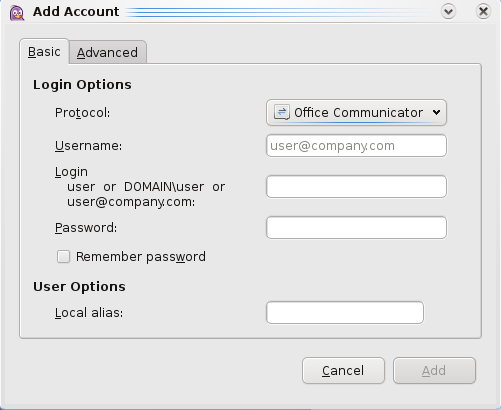

Posted: October 22nd, 2009 | Author: khosrow | Tags: debian, linux | Comments Off on Deplyoing a Large Website Painlessly on Debian
We run a large scale and highly visible website. This site is updated frequently, and is very complex. So far the way the site is updated is using subversion where the latest code is checked out into the public servers – after much testing, of course.
A typical release goes something like this:
checkout code from subversionrun a few scripts to modify database and generate intermediate filesgenerate various connections between site and underlying softwareupdate underlying software
One problem with this approach is inevitably developers tend to push last minute fixes while in testing mode. It’s easy to update the code with a svn co but the code always tends to diverge and one fix usually leads to other bugs! Another issue is that each time a release is made a long list of complicated – and different each time – steps have to be followed. There are many other issues as well that I won’t go into right now, but suffice to say each release is as easy as pulling your own tooth!
So, one idea to cut down on all this trouble is to build a deb package for each release. This essentially locks down development, since each code change involves building a new package. I’m also fairly certain it will make life in the software lifecycle much easier.
And the debianized release would go like this:
apt-get install website packageapt-get install underlying software
Or even simpler if I made the website package depend on the underlying stuff:
apt-get install website package
Now only if I could get the decision makers to agree.
Posted: October 15th, 2009 | Author: khosrow | Tags: google wave, Web 2.0 | 2 Comments »
Here’s what wave looks like when you first enter.
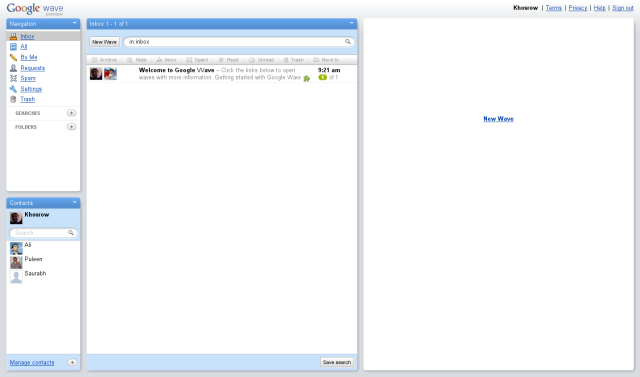
There’s not much you can do with it at the moment, but I guess you could leave your comments below (if you have a wave account).
[wave id=”googlewave.com!w+i_FejqpYA” bgcolor=”white” color=”black” font=”Helvetica”]
Posted: September 10th, 2009 | Author: khosrow | Tags: apple, linux, opensource, Technology | Comments Off on Open Source on the Desktop
The desktop wars have been heating up since the arrival of ubuntu on the scene. There’s been many articles stating that Linux has arrived on the desktop and so on. But last month while at an open source conference I realized that aside from ideological battles, balance is what’s needed. My friend had a laptop running the latest version of Ubuntu, he quickly ran into trouble when doing something as simple as a hibernate and ended up having to reinstall the OS to fix the problem.
So what do I want to say here? Well, to me where open source makes sense is in the enterprise. A place where the cost of software is minimized and the benefits of open source are quickly realized. But on the desktop, where I don’t have time to deal with unsupported hardware or small issues it makes no difference! So at this moment, the deciding factor should be what runs what I need to run painlessly and seamlessly…
Posted: December 2nd, 2008 | Author: khosrow | Tags: iphone, jailbreak | No Comments »
This weekend I finally manage to jailbreak my iphone. The process is pretty painless, and is well documented on various sites; here, and here, for example.
The best part of doing this is that I can now unlock features of the iphone that would normally be closed to me. I can now record video with the phone, tether the phone to a laptop, and most importantly and ridiculously I can use the native terminal on the system. And a very cool side-effect is that I can now ssh to a remote host from my cell phone!
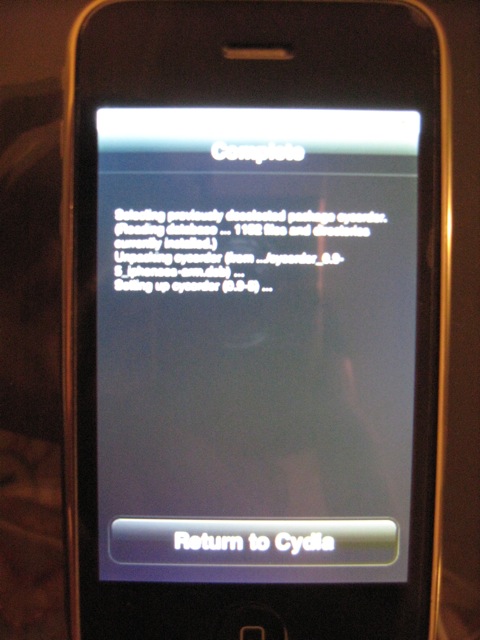
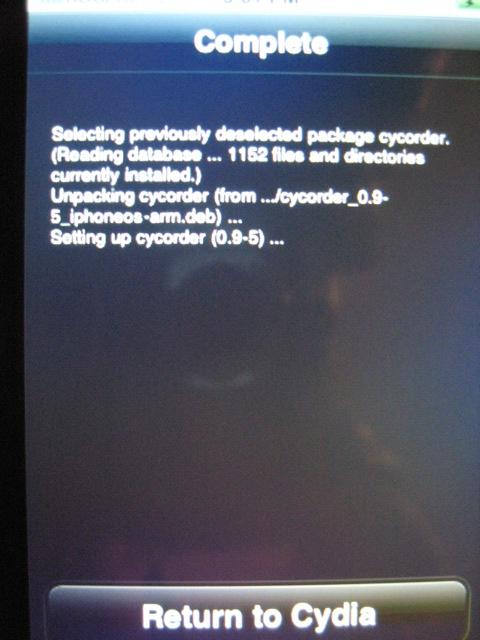
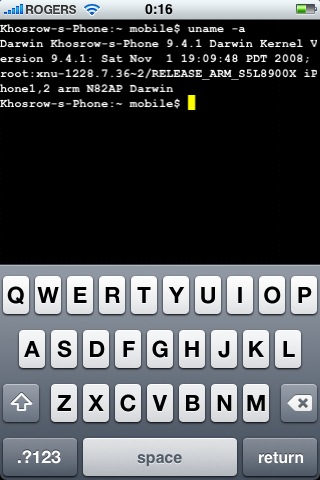
Dec 16, 2008 Update:I added a nicer screenshot of the terminal app to the above shots.
Posted: October 13th, 2008 | Author: khosrow | Tags: desktop, linux, Technology, widgets | Comments Off on The World of Desktop Widgets – Part 1
Back in 2003 when I still had enough time to follow up on the latest Linux applications, there was a new tool (or toolkit) developed called Karamba. It aimed to bring desktop widget functionality to KDE on Linux. Soon there was a new application called Superkaramba that improved on the old application and got a lot of attention. Curious as I was, I downloaded it, compiled it and was soon running it on my desktop.
Looks like the idea of using desktop widgets was catching on at the time. At the same time there was an application called Konfabulator (which got bought out by Yahoo and is now called Yahoo! Widgets). When I started working and was forced back on Windows, I started using konfabulator and liked it quite a lot. At around the same time Mac OS X had an application called Dashboard, which did all the things the other two were aiming for. With the release of Windows Vista, Microsoft entered the field and released native widgets called Gadgets. The final development – as far as my exposure lets me believe – was the development of Plasma in the new version KDE. There is also one other player in this game that introduced its own version of widgets. Google created the desktop search back in 2004, and soon after added a sidebar with gadgets and other plugins. As one would guess, these gadgets performed the same general tasks as all the other flavours and aimed to provide the same solutions.
I this article I will try and review each of these implementations both from a user perspective. Part 2 will carry reviews from a developer’s point of view.
Read the rest of this entry »
Posted: August 13th, 2004 | Author: khosrow | No Comments »
and here’s my Raytracer project that I did for graphics. It is by no means complete, and I really want to make it into a really nice application.
Today was spent playing soccer, passing out on a friends couch after a good meal of pizza and wings, waking up shortly and playing networked computer games in a dingy basement!
Long live student life!!!
Posted: February 28th, 2004 | Author: khosrow | Tags: linux, opensource | No Comments »
I have been using GNU/Linux since 2000, and have tried to educate myself on the operating system and the programs usually distributed with it as much as possible. I’ve slowly grown fond of it, and at times have become somewhat of a zealot!
At some points I have had to ask myself whether it made sense to use Linux as a primary operating system. After all, I could just do what most other students do, and keep a dual boot system – with Windows as the first option.
This past month, the motherboard on my computer died and gave me an excuse to reformat my computer while fixing this small problem. My experiences in doing yet another Linux install – this time after almost a year – made me think about some issues I had with this Operating System, that I will try to convery here.
Read the rest of this entry »





